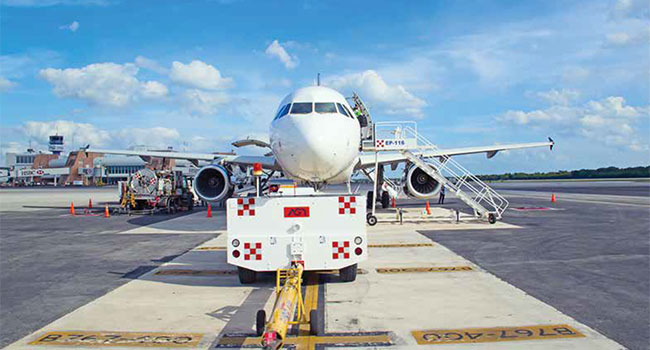
Security with an International Flavor
From security check to perimeter protection: Video security for Cancun Airport
- By Cinthia Bautista
- Apr 01, 2018
It is Mexico’s second busiest airport, after Mexico City, but the
biggest for international passengers: Cancun Airport. The airport
is situated on the Caribbean coast of Mexico’s Yucatán Peninsula,
and serves a growing number of visitors coming from all
over the world to visit Cancun’s Maya heritage or to enjoy the
beautiful beaches.
An Explosion in Passenger Numbers
The number of passengers has been growing quickly, from 7 million
in 1999 to approximately 23 million annually today. The number of
visitors is also expected to increase rapidly thanks to new mega-resorts
already in construction all over the area. Major international
airlines, as well as charter airlines, have direct or connecting flights
to Cancun every day. Now, more than ever, Cancun Airport is easily
accessible from almost every major city in the world.
To handle the growing number of passengers, a fourth terminal
has been put into operation this year, making it Mexico’s only airport
with four terminals. With the number of visitors increasing significantly,
passenger safety and security has become more demanding
and has required a new comprehensive security solution.
The airport operator ASUR runs nine airports in the southeastern
state of Mexico—including Cancun, Cozumel, Huatulco, Merida,
Minatitlan, Oaxaca, Tapachula, Veracruz and Villahermosa. It
is the third largest airport services company for passenger traffic in
Mexico.
Based on its extensive experience in airport operations, ASUR determined
that it needed to redesign video security at Cancun Airport
to have one system operating across all four terminals. Bosch was
selected not only to equip the new Terminal 4 with video cameras
but also to integrate the existing video security systems of Terminals
1, 2, and 3 into one comprehensive video surveillance solution which
could be managed centrally from one unified platform.
Covering Specific Needs
In Terminal 4, nearly 600 cameras of different series and types have
been installed to cover the specific needs of the different areas both
inside and outside the terminal. Cameras used include both 1080p
and 5 megapixel resolution fixed and moving cameras, such as the
FLEXIDOME IP 7000 VR, AUTODOME IP starlight 7000 HD,
and a mix of IP 4000 and IP 5000 series cameras.
The cameras are used for a wide range
of applications. Inside the building they
monitor the security and baggage check, the
waiting areas, the offices and flight tower as
well as the convenience stores. Outside the
terminals they check the airport perimeter
areas and all access points to the airport as
well as the airfield and runway. Bosch cameras
with starlight technology provide clear
images regardless of lighting conditions, delivering
full color images in the dark beyond
the point where other cameras turn to monochrome
images.
Fulfilling a key requirement set by
ASUR, all new cameras in Terminal 4 are integrated
into one video security solution that
includes the existing cameras of Terminals
1, 2 and 3. The Bosch Video Management
System (BVMS) serves as the joint platform
to centrally manage almost 1,800 cameras
across the four terminals, including their recordings.
The video streams of all cameras
are safely stored on multiple Bosch DIVAR
IP 6000 network video recording units with
92 Terabytes of available storage capacity.
Managing Data Volume
For reliable and easy management of the
large data volumes, the video security solution
includes four Video Recording Managers
(VRM) from Bosch. The VRMs enable
the cameras to stream relevant video data
directly to the available DIVAR IP storage
devices without the use of network servers.
This saves costs and server maintenance
while eliminating a possible single point of
failure, thus increasing reliability. The available
storage capacity is used most efficiently
because the VRMs automatically balance
the video stream load to the free storage
volumes. Less redundant storage is required,
and it is easier to respect retention times with
minimal risk of overwriting.
Cancun Airport uses a central monitoring
center, manned with 10 security managers
around the clock. Every security manager
has a screen that shows video captured by up
to 25 cameras. To monitor the video cameras,
security personnel can select camera
positions manually, or they are automatically
notified by alarms in the event of predefined
alarm rules being breached based on the
cameras’ built-in video analytics or motion
detection.
Airports have considerable security challenges
and incredibly demanding criteria for
the technology used to protect passengers
and employees and to prevent risks. With
many different areas needing to be monitored,
including perimeters, terminals and
other passenger facilities, it is essential to
have a comprehensive video surveillance solution.
Cancun Airport serves as an excellent
example of how a redesigned video system
can enhance security
for even the busiest of
airports.
This article originally appeared in the April 2018 issue of Security Today.